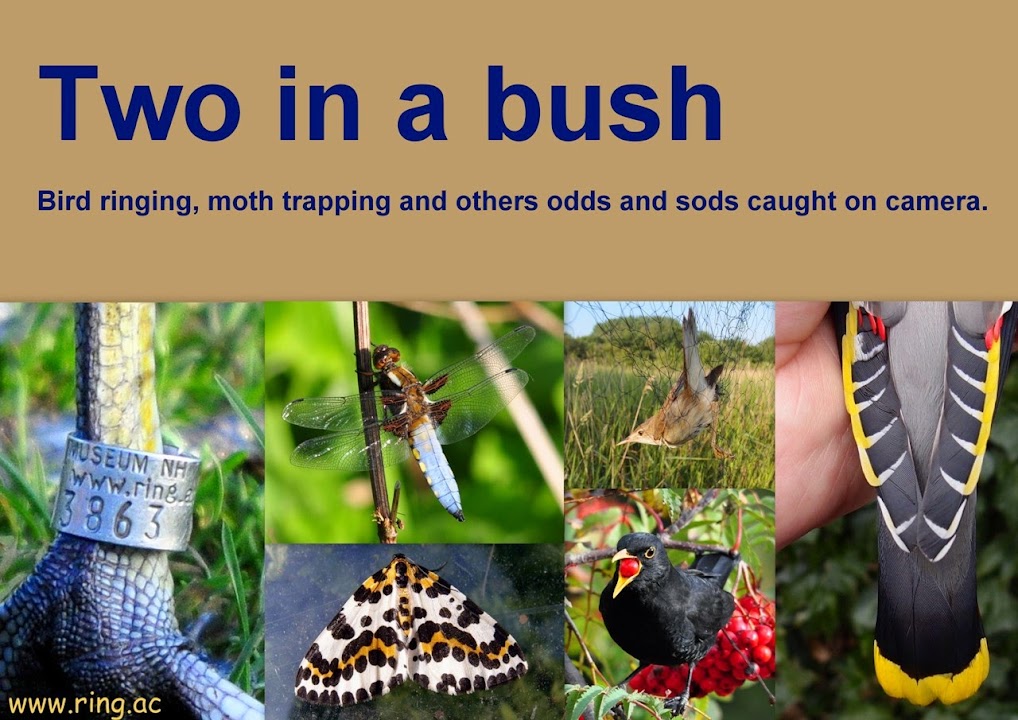I managed to catch a few birds last summer that I was able to sex from the presence of a brood patch in the case of females or a cloacal protuberance in the case of males. Although the sample size was quite small they threw a bit more light on the plumage features and on the extent of the red mask in particular. These birds confirmed that there is an overlap in the extent of the red mask between males and females and perhaps far more than is generally realised.
Bringing matters up to date I have caught more Goldfinches so far this breeding season than I have ever done before and I have been able to confirm the sex of these birds by checking them for the presence of a brood patch (female) or a cloacal protuberance (male). Being able to handle and photograph more birds of known sex has confirmed that there is a significant degree of overlap in the appearance of some males and females and others are what might be considered borderline. So lets have a look at some of these recent birds.
 |
| Z414635 was retrapped and photographed on 16/06/15 Z414932 was ringed on 16/06/15 |
 |
| Z414933 was ringed on 16/06/15 Z414934 was ringed on 16/06/15 |
| Z414921 ringed and photographed 12/06/15. Z414888 retrapped and photographed 12/06/15 |
So what sex are they: well Z414635 and Z414932 (top left & right) are females and both had very good brood patches; Z414933 and Z414934 (middle left & right) are males and each had a bulbous cloaca; Z414921 (bottom left) is a male and also had a bulbous cloaca while Z414888 (botton right) is another female that had a very good brood patch. Had I caught these birds outside the breeding season I would have probably left several unsexed based on the extent of the red mask and colour of the nasal hairs. In fact Z414635 (top left) was originally ringed on 18/01/15 and I left it unsexed at the time and that was using all the plumage features including the appearance of the lesser coverts. However, I did make a note that I thought it was possibly a male so it was a really useful to retrap this bird and find out that it is a female and that I nearly got it wrong.
The other feature that is usually checked when using plumage to sex Goldfinches is the appearance of the lesser coverts. The images below show the lesser coverts of the birds above and in the same order.
 |
| female female |
 |
| male male |
 |
| male female |
There is one more confirmed sex bird that I should show in this post to illustrate another variation in the lesser coverts. I used photos of this bird (D954944) in a recent post because it was a control and I mentioned its appearance then. The bird is a male but it had lesser coverts that looked more female like. However, the lesser coverts were mainly a golden-yellow or broadly tipped golden-yellow rather than the usual brown. It was originally ringed on 09/11/14 as an adult but wasn't sexed at that time. I can only assume the unusual appearance of its lesser coverts played a part in the decision not to sex it when it was ringed. Some may see examples like this as a reason to treat the lesser coverts as an unreliable feature but I simply see it as another variation to be aware of.
 |
| Male Goldfinch D954944 photographed 27/05/15 |
Whatever your view is on this subject I hope you find the photographs of known sex birds useful at least. Some blogs and guides only show images of males and females that have very obvious differences in appearance similar to those below. Those birds are not the problem and simply making reference to the variability of the species doesn't show the points of overlap where accurate sexing starts to become more difficult or impossible using the plumage features discussed. I hope this post has gone some way to rectifying that.



No comments:
Post a Comment